
- Geography India - Introduction
- Geography India - Physical Aspect
- Geography India - Drainage System
- Geography India - Climate
- Geography India - Natural Vegetation
- Geography India - National Forest
- Geography India - Wildlife
- Geography India - Soil
- Geography India - Land Resources
- Geography India - Agriculture
- Geography India - Mineral Resources
- Geography India - Energy Resources
- Geography India - Industry
- Geography India - Transport
- Geography India - Communication
- Geography India - Foreign Trade
- Geography India - The People
- Geography India - Settlement
- Geography India - Migration
- Regional Development
- Geography India - Disasters
- Geography of the World
- Geography World - Introduction
- Evolution of the Earth
- Geography World - Climate
- Geography World - Transport
- Geography World - Communications
- Geography World - Population
- Human Settlement
- Human Development
- International Trade
- Geography Useful Resources
- Geography - Online Quiz
- Geography - Online Test
- Geography - Quick Guide
- Geography - Useful Resources
- Geography - Discussion
Geography World - Transport
Introduction
Trade or the exchange of commodities largely depends on transportation and communication.
Transport is a service or facility for the carriage of persons and goods from one place to the other using humans, animals, and other means of transport.
Transportation normally occurs through land, water, and air.
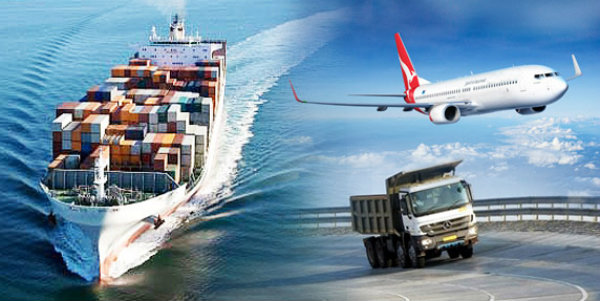
Roadways
Road transport is more preferred especially for the short distance, as it provides door-to-door service.
The worlds total motorable road length is measured about 15 million km, of which North America accounts for 33%.
The highest road density and the highest number of vehicles are registered in North America.
In North America, the highway density is about 0.65 km per sq km. So, every place is not more than 20 km distance from a highway.
Roads laid along international boundaries are called border roads.
Railways
Probably, the first public railway line was opened in 1825 between Stockton and Darlington in northern England.
Belgium has the highest density of 1 km of railway for every 6.5 sq. km area.
In Russia, railways account for about 90% of the countrys total transport with a dense network west of the Urals.
Australia has about 40,000 km of railways, of which 25% are found in New South Wales alone.
Transcontinental railways run across the continent and connect its two ends.
TransSiberian Railways is major rail route of Russia, which runs from St. Petersburg in the west to Vladivostok on the Pacific Coast in the east.
Major cities that trans-Siberian railways connects are Moscow, Ufa, Novosibirsk, Irkutsk, Chita, and Khabarovsk (as shown in the map given below).
Trans-Siberian railways is the most important route in Asia and the longest (i.e. 9,332 km) double-tracked and electrified transcontinental railway in the world.
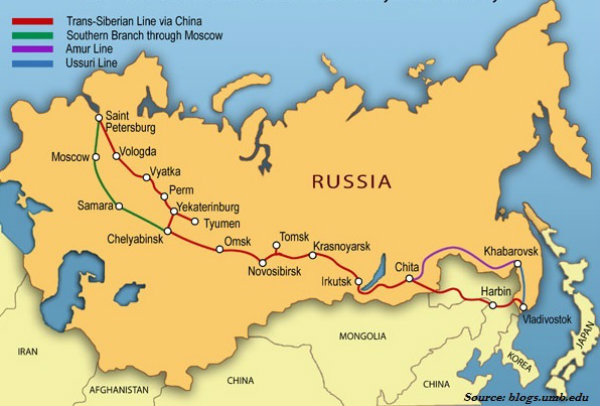
TransCanadian Railways is 7,050 km long rail-line, running between Halifax in the east and Vancouver on the Pacific Coast in Canada.
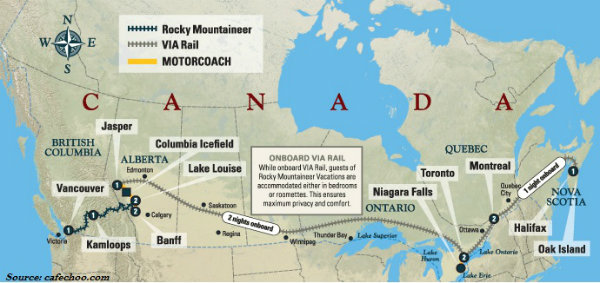
Major cities that trans-Canadian railways connects are Montreal, Ottawa, Winnipeg, and Calgary.
The Orient Express runs from Paris to Istanbul passing through the cities Strasbourg, Munich, Vienna, Budapest, and Belgrade.
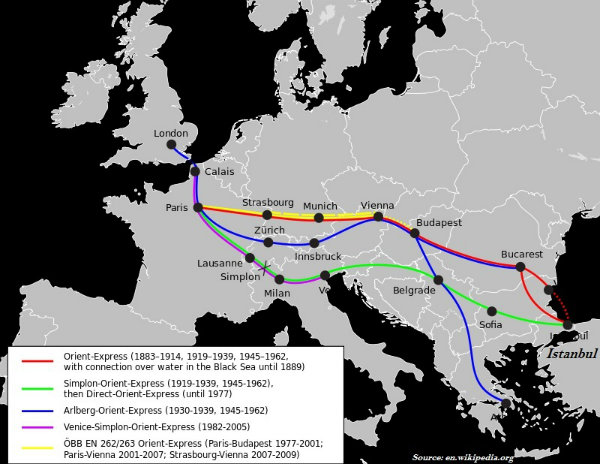
Waterways
The sea routes offer a smooth highway traversable in all directions with no maintenance costs.
The Northern Atlantic Sea Route covers one fourth of the worlds foreign trade; so, it is the busiest sea route in the world and popularly known as the Big Trunk Route.
The MediterraneanIndian Ocean Sea Route connects the highly industrialized Western European regions with West Africa, South Africa, South-east Asia, and the commercial agriculture and livestock economies of Australia and New Zealand.
The Cape of Good Hope Sea Route connects West European and West African countries with Brazil, Argentina, and Uruguay in South America.
Trade across the vast North Pacific Ocean moves by many routes, which converge at Honolulu.
The Panama and Suez Canals are two vital man-made navigation canals.
Connecting the Mediterranean Sea and the Red Sea, the Suez Canal had been constructed in 1869.
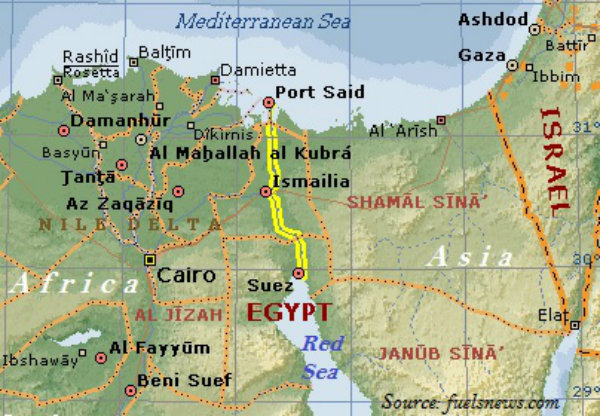
Suez Canal was constructed between Port Said in the north and Port Suez in the south in Egypt (as shown in the map given below).
Suez Canal is about 160 km long and 11 to 15 m deep.
About 100 ships travel daily through Suez Canal and each ship takes 10-12 hours to cross the canal.
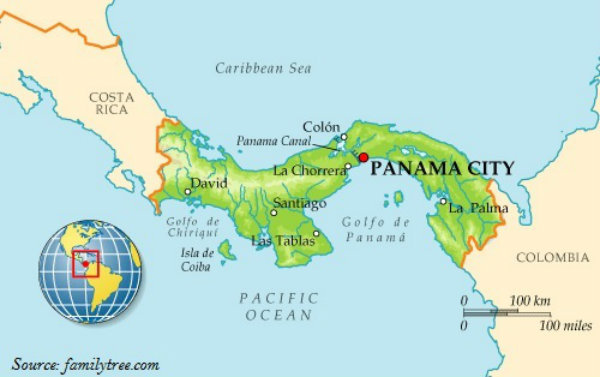
Panama Canal connects the Atlantic Ocean in the east to the Pacific Ocean in the west (as shown in the image given below).
Panama Canal was constructed across the Panama Isthmus between Panama City and Colon by the U.S. government.
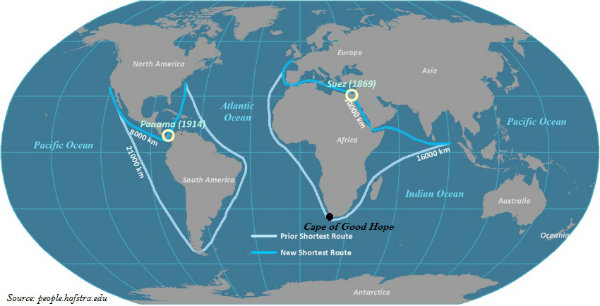
The reduction in distance because of the construction of Suez Canal and Panama Canal is shown in the following map −
Rhine River flows through Germany and the Netherlands.
The Rhine is navigable for 700 km from Rotterdam, at its mouth in the Netherlands to Basel in Switzerland.
The Great Lakes of North America i.e. Superior, Huron, Erie, and Ontario are connected by Soo Canal and Welland Canal to form an inland waterway.
Pipelines are normally used extensively to transport liquids and gases such as water, petroleum, and natural gas for an uninterrupted flow.